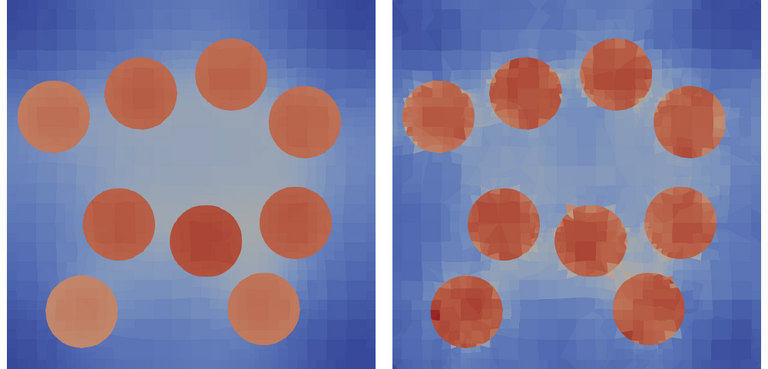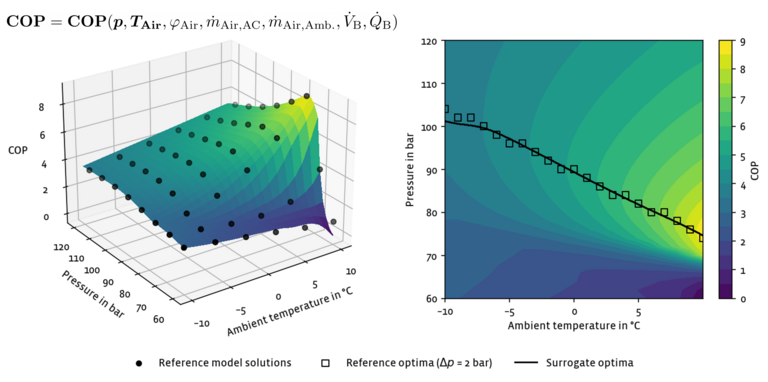Machine Learning
We create real-time capable data-driven models of components and systems for our customers, which can be used, for example, in complete system simulation or for control development. The models we develop are based on simple polynomial approaches, methods of Proper Orthogonal Decomposition (POD), neural networks, or combined physical and data-driven model approaches.
The use of machine learning methods to create powerful models (based on simulation, measurement, and field data) opens up a wide range of new possibilities for us. In order to offer our customers application-oriented solutions, we combine our many years of experience in the modeling and simulation of thermal systems with various machine learning methods. These cover a wide spectrum of data-driven modeling techniques, from polynomial models to neural networks to Proper Orthogonal Decomposition (POD). Using proven and advanced experimental design methods, the data required for model generation can be produced either by simulation or measurement in a timely and cost-efficient manner.
We create computationally efficient, data-driven models to solve control engineering problems and to execute optimization calculations. These enable us to develop powerful model and optimization-based control concepts, such as the real-time determination of quasi-stationary optimal setpoints and manipulated variables. The models created can be ported to the respective target system by C-based routines. TLK-Thermo offers application and customer specific implementations for this purpose.
Figure 1: Illustration of exemplary results of a surrogate model for calculating the stationary heating COP of a CO2 BEV thermal management system as a function of seven operating boundary conditions and parameters.
The input variables considered in the model are refrigerant high pressure, ambient temperature, ambient humidity, air mass flow rate at the air conditioning unit and ambient heat exchanger, coolant volume flow rate and cooling heat flow rate of the traction battery. The model was used for operating point-dependent efficiency optimization.
Left: Comparison of the heating COP as a function of the refrigerant high pressure and the ambient temperature at an exemplary operating point. Due to the high evaluation speed, the stationary surrogate model allows a comprehensive characterisation of the correlation with little loss of accuracy.
Right: Comparison of the optimum refrigerant high pressure as a function of the ambient temperature at an exemplary operating point. The reference results were determined based on an extensive simulation study of the detailed reference model. The stationary surrogate model enables the use of efficient optimization algorithms
Field computations or CFD simulations offer a high level of detail, but are typically very time consuming to execute. To speed the simulation of computationally intensive, highly discretized models, we use model reduction techniques, for example POD, to initialize the computations with approximate solutions. For models used in system simulations, we use krylov-based model reduction methods using Ansys Mechanical (MORiA) in addition to POD. Using dedicated planning and proven methods from the field of Design of Computer Experiments (DoCE), we produce models that are time and resource efficient.
At TLK, we are continuously working on the further development and extension of the methods we use in order to be able to offer advanced and novel solutions in the future. In addition to the detailed representation of dynamic systems using neural ODEs, we are also looking into the use of hybrid methods in which physical and data-driven modeling approaches are combined. In this way, we pursue the goal of increasing the interpretability and generalization capability of data-driven models.



